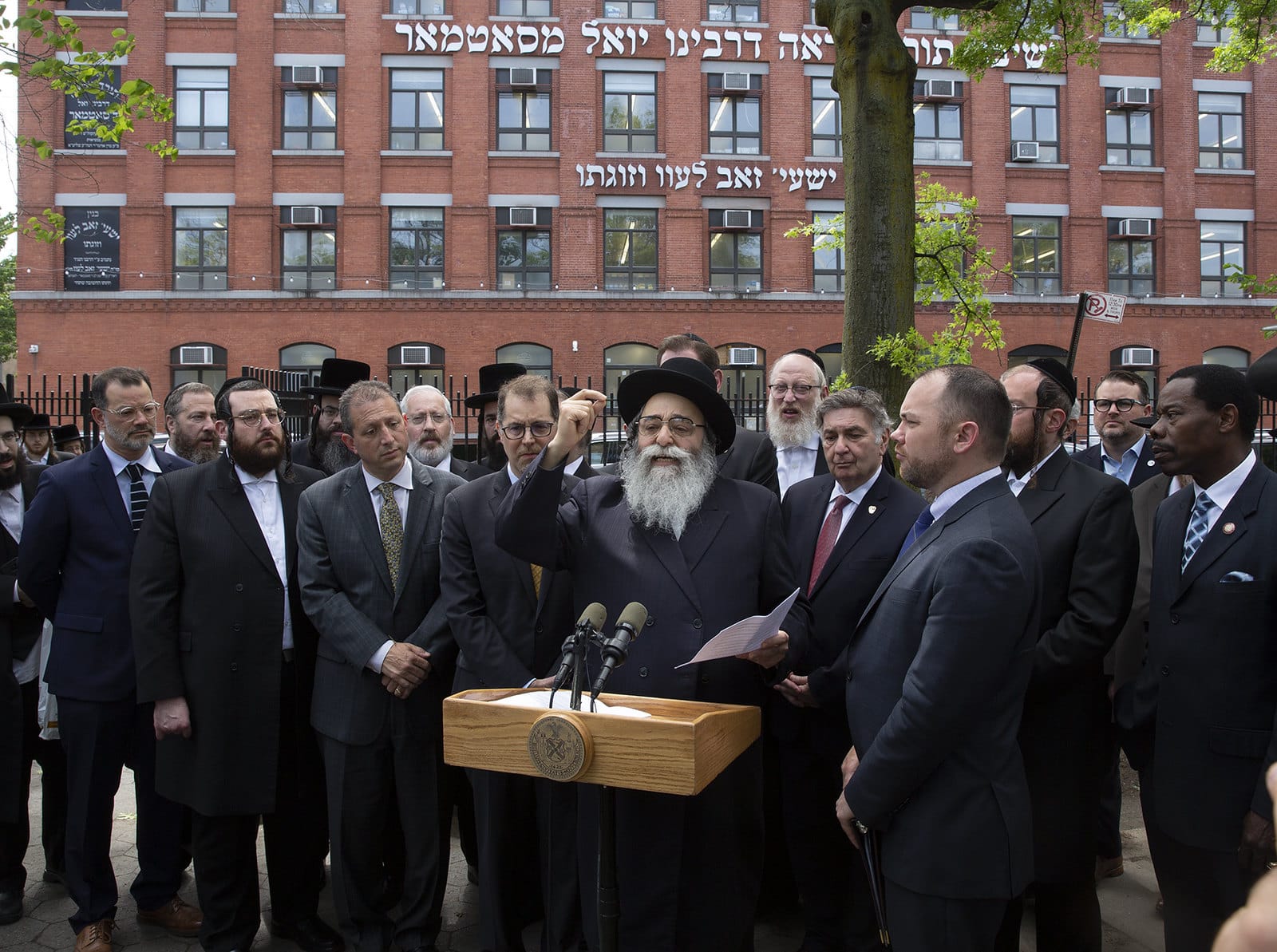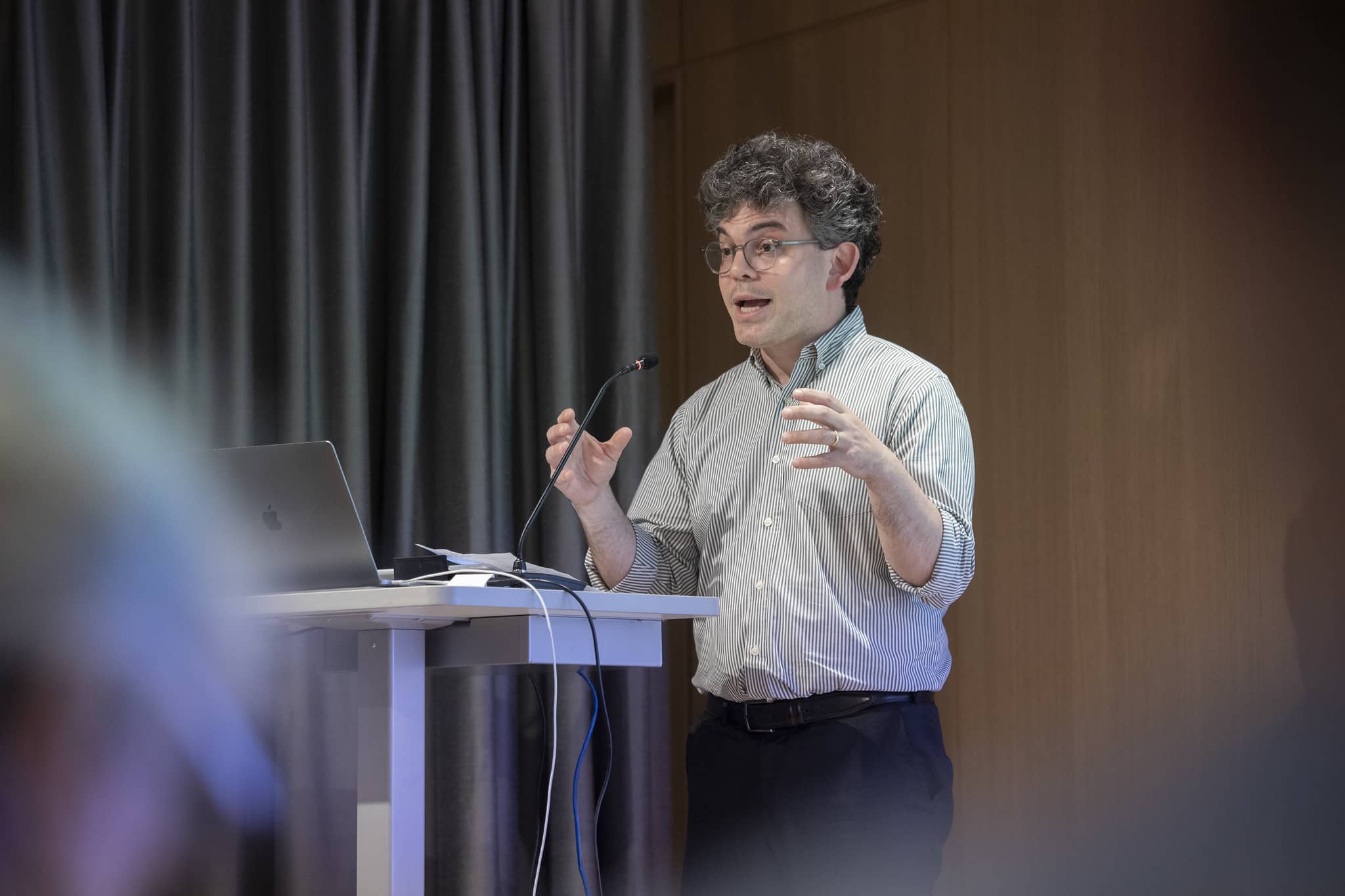Anti-Hate Crime Curriculum Piloted at Three Brooklyn Schools
The four-session workshop covered hate and discrimination against a variety of groups living in Williamsburg and Bed Stuy, among other topics.

Photo by Susan De Vries
By Kirstyn Brendlen, Brooklyn Paper
With hate crimes across the city on the rise, some Brooklyn leaders believe that educating the borough’s students about and against hate and antisemitism is a key to fighting violence and bias. An experimental new curriculum designed to do just that rolled out at three local middle schools last school year, with the hope that it will eventually be used in all five boroughs.
The four-session workshop was designed by Council Member Lincoln Restler and local community leaders in response to rising hate crimes, especially those fueled by antisemitism, and launched in Williamsburg and Bed Stuy — two nabes with diverse populations and large Jewish communities.
A response to rising hate crimes
Hate crimes across the city jumped by more than 152% from 2020 to 2023, per Police Department data. So far this year, 330 hate crimes have been reported across the city – up 11.9% from the same period last year.
Antisemitic crimes have risen even more steeply. At least 325 antisemitic incidents occurred across New York City last year, up 180 percent from to 116 in 2020.
The increase is especially apparent in neighborhoods with large Orthodox and Hasidic Jewish communities like Williamsburg and Borough Park, the data shows. Both nabes reported roughly a dozen antisemitic incidents last year, and more in 2022.

“What has been clear to me is that the antisemitic incidents have disproportionately impacted the visibly Jewish community,” Restler said. “When I walk down the street, I’m not subject to random acts of antisemitism similarly to the experiences of the Hasidic community in Williamsburg.”
In conversations with local police and community leaders, Restler said, it became evident that a number of the people perpetrating those crimes were young people.
Of the 33 people arrested for antisemitic incidents during the first quarter of 2024, six were teens, per the latest police data, including five 15-year-olds who were arrested in Williamsburg. Since then, more teens have been implicated in antisemitic incidents, including a 12-year-old boy who was arrested for allegedly attacking two young Jewish children in Bed-Stuy.
At least some of that is driven by ignorance — “kids who should know better, but don’t,” Restler said.
Together with the city’s Commission on Human Rights and local organizations Los Sures, United Jewish Organizations of Williamsburg, and the Bridge Street Development Corporation, Restler’s office built a four-session curriculum to address that ignorance as well as the roots of bias, how to recognize it, and what to do about it.
The new curriculum in action
In its first iteration, the curriculum, titled “Fighting Hate Violence and Antisemitism in Our Communities,” was brought to seventh grade classes at three schools in Bed Stuy and Williamsburg.
Facilitators led three different sessions about local history, ongoing systems of oppression and hate, and how to recognize and put a stop to bias and bullying. The fourth and final session brought together a panel discussion of local leaders to discuss the real-life implications of the workshop.
Hanna Grayson, a seventh grade English teacher at I.S. 318, has been teaching for nine years and said she has never seen a course like this one. Past workshops focusing on hate and diversity have been short and much less comprehensive.
Last year, the city announced it would make educational materials about hate available in public schools, and would require principals to undergo training on how to “navigate difficult conversations.” Months later, Mayor Eric Adams rolled out a new curriculum focused on hate crimes and bias. Those lessons, though, were to be incorporated into classrooms by individual teachers – not separately, as a workshop or series.
Her classroom is “very diverse,” she said, and the series inspired students to dig into their own personal histories.
“Everybody was trying to really understand where they’re from and trying to celebrate where everyone else comes from and how everybody’s story is important,” she said. “They really enjoyed the series because they were able to talk a lot about their own experiences.”
One of the first things they covered was the history of the area and the various groups who call it home, said Beth Sleipan, one of the program’s facilitators — the waves of Black, Hispanic, and Jewish migrants who settled in Williamsburg and Bed-Stuy and the oppression and hate they had faced before and after they arrived in Brooklyn.
Restler said that Juan Ramos, executive director of Los Sures and one of the people who helped design the curriculum, has worked directly with young people who have committed hate crimes.

“On multiple occasions, he would talk to the people in the community who were responsible for having perpetrated forms of hate violence — knocking someone’s hat over … or spray-painting a swastika — and they didn’t even know what the symbol meant, or why it was so hurtful,” Restler said. “They didn’t understand that the Satmar community escaped a Holocaust that killed six million Jews that led to their migration to Williamsburg.”
Teaching students about the history of the area and their neighbors was only part of the lesson, Sleipan said — they also discussed cultural and religious norms that may be unfamiliar to non-Jewish students. It was important, she said, to give students space to ask questions in a safe and respectful environment.
The second and third sessions focused on both current and historical incidents of hate and discrimination as well students’ personal experiences. They discussed everything from the Holocaust to the treatment of Native Americans in the U.S. to the ongoing prejudice against immigrants in the U.S, Sleipan said.
Understanding the terms and vocabulary of oppression and hate is particularly important, Sleipan said. Bullying and hateful incidents are not always intentional, especially when perpetrated by young people.
“There might not be an intent to harm from the bully, but if there’s harm done it is still harm done,” she said. “It’s really key for them to know what that looks like in order for them to change their perception.”
Grayson said teens also sometimes use hateful speech because they “think everything is funny.”
“Sometimes they do know that someone might be offended by something, they may not know the extent,” she said. “At this age, they want so badly to be funny and to be liked, and I think that’s why it’s important to have conversations like this where it’s like, it’s not funny, and it also doesn’t make you more popular or witty. It does tend to make you look ignorant.”
The teacher said that discussing hateful words students had been hurt by, or incidents they felt were personally hurtful and discriminatory, helped to open up the conversation about how devastating those things could be to other people.
“I think they just have to realize that things are serious, and they have lasting effects on the person, on you, on your community,” Grayson said. “Once they realized that, and they had these dialogues around it, they had that awareness that it can be more harmful.”
Once students had learned how to recognize hateful incidents, they talked about how they can interfere.
Their personal safety is paramount, Sleipan emphasized. But they role-played ways students could intervene by engaging with the bully or the person being bullied, she said, and encouraged students to come up with their own ways.
“I think it’s really important … [to acknowledge] the risk that it takes to say something in this instance, and that they might not feel comfortable saying something, and that that’s OK, but that we also want to push them enough to consider what they could say,” she said. “So that if an instance presented itself to them, that they would have tools in their pocket to say something, and improve the situation, and improve their community.”
The panel discussion, with local leaders from Jewish, Hispanic, and Black communities, was a representation of the longstanding ties between those communities in Williamsburg — where orgs like UJO and Los Sures have been working together for decades.
“It was a sense of affirmation of like, how important diversity is, as well as a mirror and a window into adult life,” Grayson said of the panel. “What this person does, and what they represent, and the fact that they were all up there saying how they appreciate being able to work together to make the community strong … I thought that was so powerful.”
The future of the program
Grayson said she truly felt that the course had reached her students — who, at the end of the year, seemed to have a better understanding of inclusion and diversity. Within the school, she said, she would like to see the students who took part in the workshops make presentations in other classrooms, to spread the lessons they learned.
The team behind the curriculum will meet with the superintendent of District 14, the Human Rights Commission, and local leaders to figure out how to expand it, Restler said.
“I think it’s an important model for us to expand into every middle school classroom in these neighborhoods, and it’s a model that can be readily tailored to meet the needs of other communities as well,” Restler said. “There isn’t a magic wand to eliminate hate … I think it comes back to the hard, slow, deliberate work of community-building and relationship-building and coalition-building that will ultimately win the day.”
Editor’s note: A version of this story originally ran in Brooklyn Paper. Click here to see the original story.
Related Stories
- Parents and Kids Find Community and Support at the Brooklyn Kindergarten Society
- Street Near Ruth Bader Ginsburg’s Midwood High School Named in Her Honor
- Community Leader Joanne Seminara to Be Honored in Naming of New Bay Ridge School
Email tips@brownstoner.com with further comments, questions or tips. Follow Brownstoner on X and Instagram, and like us on Facebook.









What's Your Take? Leave a Comment